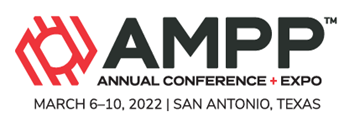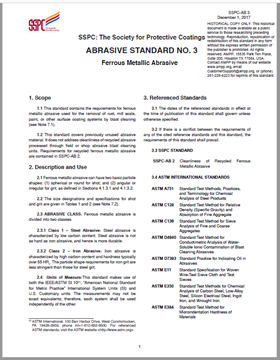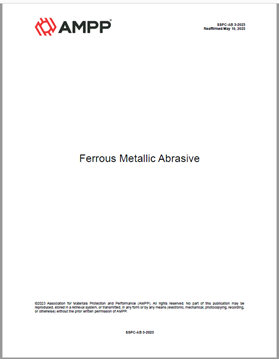Search
Military
View as
Sort by
Display
per page
Partnering with the US Navy: Water Storage Tank Maintenance on a Global Scale
Product Number:
51219-219-SG
Publication Date:
2019
$20.00
Performing Coating And Corrosion Assessments To Maintain Military Fuel Piping
Product Number:
51322-18027-SG
Publication Date:
2022
$20.00
Polymeric Interior and Exterior Marine Decking Systems
Product Number:
41213-801-SG
Publication Date:
2013
$20.00
Single-Component Polysiloxane: An Advanced Coating for Navy and Surface Topsides
Product Number:
41215-903-SG
Publication Date:
2015
$20.00
SP0308-2018-SG, Inspection Methods for Corrosion Evaluation of Conventionally Reinforced Concrete Structures
Product Number:
21128-SG
ISBN:
1-57590-220-6
$109.00
SP0308-HD2008-SG, Inspection Methods for Corrosion Evaluation of Conventionally Reinforced Concrete Structures
Product Number:
21128-HD2008
ISBN:
1-57590-220-6
Publication Date:
2008
$179.00
SP0408-2014, Cathodic Protection of Reinforcing Steel in Buried or Submerged Concrete Structures
Product Number:
21133-SG
ISBN:
1-57590-223-0
Publication Date:
2014
$179.00
SP0408-2019, Cathodic Protection of Reinforcing Steel in Buried or Submerged Concrete Structures
Product Number:
21133-2019
ISBN:
1-57590-223-0
Publication Date:
2019
$109.00
Spot-and-Sweep' Blasting for Cost Effective Outer Hull Surface Preparation
Product Number:
41213-760-SG
Publication Date:
2013
$20.00
SSPC CPC-1/NACE SP21412-2020, Corrosion Prevention and Control Planning
Product Number:
SP21412-2020
Publication Date:
2020
$109.00
SSPC-AB 3-2017, Ferrous Metallic Abrasive
Product Number:
SSPC-AB 3-2017
Publication Date:
2017
$179.00












